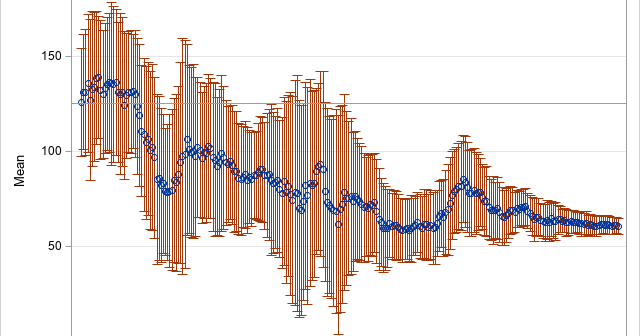The DO Loop
Statistical programming in SAS with an emphasis on SAS/IML programs
There are two programming tools that I rarely use: the SAS macro language and recursion. The SAS macro language is a tool that enables you to generate SAS statements. I rarely use the SAS macro language because the SAS IML language supports all the functionality required to write complex programs,

The SAS IML Language has a quirk with regards to functions that take no arguments. As discussed in the documentation, "modules with arguments are given a local symbol table." This is the usual behavior that programmers expect. However, the documentation goes on to state that "a module that has no

In SAS, the easiest way to draw random sampling from data is to use PROC SURVEYSELECT or the SAMPLE function in SAS IML software. I have previously written about how to implement four common sampling schemes by using PROC SURVEYSELECT and the SAMPLE function. The DATA step in SAS is

This article shows how to simulate data from a Poisson regression model, including how to account for an offset variable. If you are not familiar with how to run a Poisson regression in SAS, see the article "Poisson regression in SAS." A Poisson regression model is a specific type of

This article demonstrates how to use PROC GENMOD to perform a Poisson regression in SAS. There are different examples in the SAS documentation and in conference papers, but I chose this example because it uses two categorical explanatory variables. Therefore, the Poisson regression can be visualized by using a contingency

An article published in Nature has the intriguing title, "AI models collapse when trained on recursively generated data." (Shumailov, et al., 2024). The article is quite readable, but I also recommend a less technical overview of the result: "AI models fed AI-generated data quickly spew nonsense" (Gibney, 2024). The Gibney
